‘Leave No Trace’.. is an internationally-accepted way of minimising impacts on the places we visit, no matter how we choose to experience them. Applying the principles of Leave No Trace can help ensure the protection of Tasmania’s irreplaceable wilderness and heritage for the future.’
~ Leave No Trace Australia [^http://www.lnt.org.au/programs/7-principles.html]
.
.
‘And it’s whispered that soon if we all call the tune
Then the piper will lead us to reason.
And a new day will dawn for those who stand long
And the forests will echo with laughter’.
.
– Led Zeppelin, Led Zeppelin IV
.
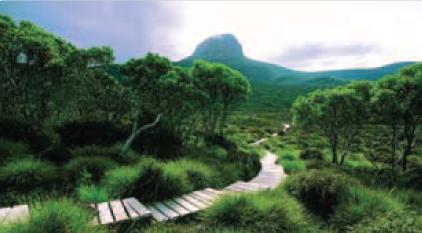 ‘As you visit this special country, please take care to Leave No Trace!’
‘As you visit this special country, please take care to Leave No Trace!’
(Click this image, then allow the music to play, while you scroll through this article)
.

.
‘Outdoor Ethics’?… do unto Nature as you would have Nature do unto you.
.
Recognise that loud supercilious tourists attract local repulsion, like raw sewage being pumped into a community’s drinking water.
.
.
.
Then there is the Logging World…
.
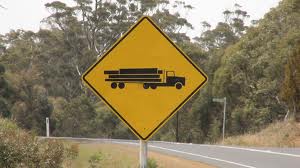 “I am the way and the truth and the life.
No one comes to log except through me.”
“I am the way and the truth and the life.
No one comes to log except through me.”
.
A “logger” logs
I am that “logger”
Therefore I log
Therefore I am.
 .
.
 Logging Canada
Logging Canada
.
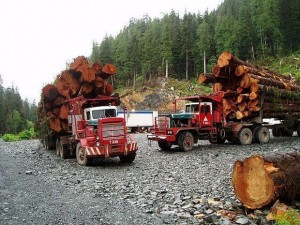 Logging British Columbia
Logging British Columbia
.
 Logging Oregon ~ that’s a ‘single rider’
Logging Oregon ~ that’s a ‘single rider’
.
 Logging Tasmania like there’s no tomorrow..and they were right
Logging Tasmania like there’s no tomorrow..and they were right
.
 Logging Borneo
~ a rearward perspective
Logging Borneo
~ a rearward perspective
(click to enlarge)
.
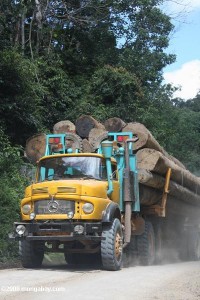 Logging more of Borneo
Logging more of Borneo
.
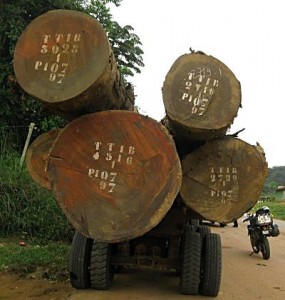 Logging Gabon, west African rainforest
Logging Gabon, west African rainforest
.
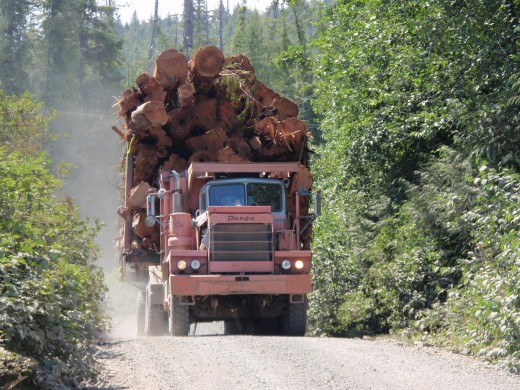 Get out of my bloody way!
It’s logging season and they could change the laws next week!
Get out of my bloody way!
It’s logging season and they could change the laws next week!
.
 Quality Control in Tasmanian Logging
Quality Control in Tasmanian Logging
.
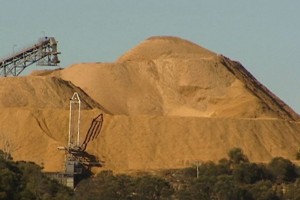 Triabunna’s Forest Death Camp
Triabunna’s Forest Death Camp
.
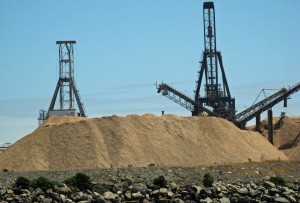 Burnie’s Forest Death Camp
Burnie’s Forest Death Camp
.
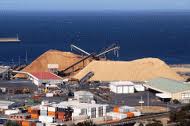 Woodchip Town
~ home of loggers…twenty eight generations at least!
Woodchip Town
~ home of loggers…twenty eight generations at least!
.
.
‘Ta Ann’: Forestry Tasmania’s Malaysian Veneer
.
Desperate to find new buyers to justify logging Tasmanian native forests, Forestry Tasmania has sought its Malaysian Solution. The propaganda was that ‘the mills will process regrowth logs only’ and will create local jobs. But after investing tens of millions in two veneer mills, Malaysian logger, ‘Ta Ann’ is now pressuring the government to give them access to Tasmanian native forests to feed the mill monsters. So it was all a veneer of truth.
It all screams of the 1916 ‘Zinc Bargain‘ when the Tasmanian government approved a hydro bulk power contract for the Amalgamated Zinc smelter. By the 1930s, the smelter was swallowing up 3/4 of the Hydro Electric Departments electricity output. Dodgy government deals for big foreign corporates to exploit Tasmania’s native forests. Indeed, Newood mill in Huon built by John Holland the Huon Wood Centre Infrastructure
John Holland has reached practical completion of the stage 2 infrastructure works on the Huon wood centre site required the installation by Transend of a 110kV transmission spur to divert hydro-electrical power from Castle Forbes Bay to power Ta Ann’s Huon mill. .
‘In 2005, Forestry Tasmania was successful in securing the commitment of the Malaysian-based timber company, the Ta Ann Group, to develop two rotary veneer peeling mills in Tasmania at a cost of $65 million. The mills will process regrowth logs only [ed: famous last words] and are to be located ‘in the forest.’
“A rotary veneer mill is an efficient means of adding value to short logs that are not useable for higher-value purposes such as sawmilling,” ~ Bob Gordon (Managing Director of Forestry Tasmania)
In 2007, the first of the mills opened in the Huon district and the second, at Smithton in the North West is currently under construction. When fully operational, the two mills are expected to employ 120 Tasmanians. [ye ol’ jobs lure]
Now many regrowth logs that were previously classified as pulpwood are suitable for the manufacture of rotary veneer for construction grade products. Through Forestry Tasmania’s partnership with Ta Ann, up to 25% of wood that was previously chipped is now ‘peeled’ here in Tasmania for higher value veneer production.’ [Source: ^http://www.forestrytas.com.au/regional-dev]
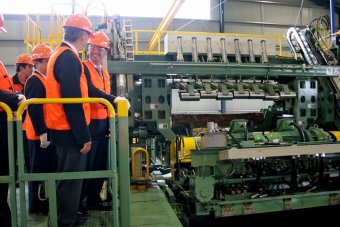 Politicians froth at the prospect of launching anything in front of the media
..here Tasmanian then Premier David Bartlett launching ‘the veneer’ of the Veneer Mill in Smithton in 2008 – ‘plantations only’
.
Politicians froth at the prospect of launching anything in front of the media
..here Tasmanian then Premier David Bartlett launching ‘the veneer’ of the Veneer Mill in Smithton in 2008 – ‘plantations only’
.
.
‘The company expects the mill will employ 50 people once it reaches full production. Construction on the $35 million rotary peel mill began in April and last month the company exported its first shipment of veneer to Malaysia.
Today’s symbolic opening was attended by the mill’s Malaysian backers, including the Ta Ann Chairman Datuk Hamed Sapawi, who says Tasmanian eucalypt veneer is particularly well regarded on international markets.
Ta Ann’s first Tasmanian mill in the state’s south began production last year, with the Smithton mill bringing the company’s total investment in Tasmania to $70 million.
Mr Bartlett says the two mills add significant value to timber that would have otherwise been exported as wood chips.’
[Source: ‘Veneer mill officially online’, ABC, 20081128, ^http://www.abc.net.au/news/2008-11-28/veneer-mill-officially-online/222334]
.
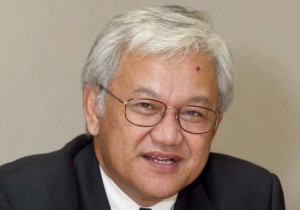 Logging Mogul, Abdul Hamed Sepawi
Malaysian millionnaire boss man and logger pay master – owner of multinational logger ‘Ta Ann’
Logging Mogul, Abdul Hamed Sepawi
Malaysian millionnaire boss man and logger pay master – owner of multinational logger ‘Ta Ann’
.
Sepawi started Ta Ann as a trading firm and now it’s a timber conglomerate with more than 3,000 employees. Ta Ann invests in property development through listed Naim Holdings, which he chairs. Petrol giant Petronas awarded a Ta Ann subsidiary and partner a $780 million deal late last year to build an oil and gas terminal in Kimanis on Borneo.’
But ‘Australian activists are wondering how the Ta Ann Group managed to develop powerful political links in Tasmania. The multi-million-dollar Sarawakian business concern, Ta Ann Group, has managed to secure a grant from the Australian government to invest in a wood veneering factory in Tasmania. Astonished observers and environmentalists, however, are wondering why the Australian government would pay the Sarawak Chief Minister Taib Mahmud-linked company to strip their forest?
Ta Ann is run by Taib’s cousin and well-known proxy, Hamid Sepawi. Sepawi owns a third of the company. According to the Green Party, thus far no satisfactory answer has been provided.
When the project was awarded to Ta Ann, it was with the hope that it would breathe life into a struggling industry.
Ta Ann, when it opened the project, promised that the project would would rely on plantation forests and not extract wood from Tasmania’s remaining high conservation value forests.
 Stihl logged – Tasmanian Native Forests
“Tasmanian eucalypt veneer is particularly well regarded on international markets” ~ Sapawi.
Stihl logged – Tasmanian Native Forests
“Tasmanian eucalypt veneer is particularly well regarded on international markets” ~ Sapawi.
.
Tasmania’s primary jungle has been classified as “high conservation value forests”. But recent developments have revealed otherwise. Ta Ann is now pressuring the government to give them access to primary jungle because the quality of plantation wood is not sufficient for their factory and they are demanding hardwood from the jungle.
Environmental group Huon Valley Environment Centre’ spokesman Jenny Weber said the Tasmanian government and Ta Ann were locked in logging the native Tasmanian forests.
“The Tasmanian government and Ta Ann are locking in the logging of native forests to meet a wood supply contract till 2027.
“High conservation value forests are being lost to feed Ta Ann’s mill, when they should be in a moratorium now,” she said.
.
Protests met with contempt
 .
.
Weber and several activists yesterday boarded a Ta Ann boat laden with wood taken from Tasmania’s primary jungle. They climbed to the top of the boat’s crane tower and chained themselves to it in a bid to draw attention to Ta Ann’s greedy plunder of their own forest.
The protesters are not alone in their anti-logging stance. There has been similar protests and actions like this one in the past, especially in the port areas. These protests have been met with strong-armed tactics and contempt by the authorities.
Earlier this year, the Tasmanian Port Authority announced a 50-metre exclusion zone around all vessels exporting wood chip and veneer. The move is seen as an attempt to prevent protests from holding up Ta Ann’s exports.
There is an overwhelming view among Australians that all logging of primary jungles should be stopped.
Much curiosity has risen as to how this Taib-linked company managed to develop such powerful political links in Tasmania, which is considered to be Australia’s remotest region.
The latest campaign in Tasmania against Ta Ann is a sign of the developing international awareness of Taib and how his greedy pacts with timber tycoons has stripped the Sarawak forest bare.
He and his cronies have spread their tentacles abroad, engaging in plunder across the world’s few remaining areas of virgin jungle.
Tasmania is developing a strong movement to prevent that from happening in its region.
Tasmanian environmentalists now join a legion of other activists across the globe who are against the logging of the world’s remaining forests and the injustices meted out to the indigenous communities in Sarawak and elsewhere.
.
[Source: ‘Why’s Australia ‘paying’ Taib-linked group?‘, 20110719, by Clare Rewcastle Brown, founder/editor of Sarawak Report,^http://hornbillunleashed.wordpress.com/2011/07/19/20969/]
.
.
.
Forestry Tasmania’s Chinese Solution
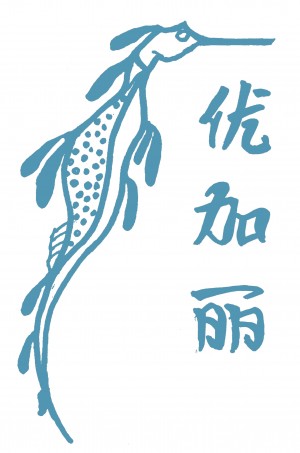 Tasmania’s Weedy Sea Dragon
… appropriated for Chinese gain over Tasmania and Tasmanians ~ wake up!
Tasmania’s Weedy Sea Dragon
… appropriated for Chinese gain over Tasmania and Tasmanians ~ wake up!
.
‘Forestry Tasmania is always seeking new markets for the Tasmanian forest industry.For example, it has established a new brand in China to promote ‘sustainably harvested‘ Tasmanian peeler logs. Eu Jia Li, (translation: strong and beautiful) is already well respected and it is hoped that it will become a vehicle for a robust trading relationship between Tasmania and China. The Tasmanian weedy sea dragon has been chosen as the brand logo because, like eucalypts, it is indigenous to Tasmania and in Chinese culture, the dragon represents strength and power…for China!
How appropriate a logo! Like Tasmania’s high conservation value native forests, Tasmania’s seadragons have become scarce and are under continual threat from poaching and pollution. The only reason the sea dragon is respected in Chinese culture is because it is killed for backward and superstitious Traditional Chinese Medicine. Traditional Chinese Medicine prescribes seahorses are prescribed from ailments such as asthma, arteosclerosis, dizziness, joint pain, impotence and incontinence. Dried sea horses are consumed for virility.
What is wrong with Viagra? Seadragons in Australia are officially protected by the Federal Government of Australia, but try telling Forestry Tasmania that!
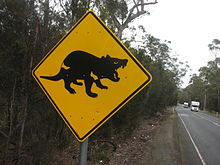 Here’s a logo to send back to the Chinese loggers!
Here’s a logo to send back to the Chinese loggers!
.
.
Forestry Tasmania’s ‘Biomass’ Solution
.
Here’s the greenwash spin for biomass by Forestry Tasmania:
‘As governments around the world grapple with global warming, attention is turning to an age old solution – biomass.
Biomass – essentially organic material such as wood from forests or waste material like cattle dung – is one of the oldest sources of energy and is now undergoing a revival as countries look for alternatives to fossil fuels.
The world’s leading countries in renewable energy production, Denmark, Sweden, Finland, the United States and others in Europe are using forest waste in particular to generate electricity.
Forestry Tasmania has been planning for a biomass plant in the south of the state for at least five years. When it developed the investment ready site at Southwood in the Huon Valley, Forestry Tasmania set aside an area for a biomass plant, to generate renewable energy from forestry debris that would otherwise be burnt.
Using our international contacts, we are seeking investors for this exciting project. If successful, we will not only produce more electricity for the state, but reduce greenhouse gases and the amount of smoke generated by forest fires.’
.
[Source: Press Release: ‘Biomass – a new form of renewable energy’, Forestry Tasmania, ^http://www.forestrytas.com.au/regional-dev, retrieved 20110924]
.
But the historical veneer is that once the furnaces are built, like the veneer mills, the multinationals will pressure the Tasmanian government for more fuel and native forests will become fodder for yet another Forestry scheme. Forestry Tasmania knows this and will argue its age old justification of jobs, job, jobs.
 Like all great loggers, I have seen more than I remember, and remember more than I have seen.
Like all great loggers, I have seen more than I remember, and remember more than I have seen.
.
.
Further Reading:
.
[1] Seahorses and Chinese Backward Medicine
.
‘In China, seahorses are prescribed from ailments such as asthma, arteosclerosis, dizziness, joint pain, impotence and incontinence. The fact that dried sea horses are consumed for virility is ironic because sea horse are a species in which the males get pregnant.
Seahorse soup “North is ginseng and south is seahorse” is a Chinese adage from the Divine Peasant’s Herbal Compendium. But Chinese have not been the only ones who consumed seahorses as a medicine. The Roman historian Pliny the Elder reported that “ashes of seahorse…mixed with soda and pig’s large” cured baldness.
In Hong Kong, “inferior” seahorses sell for about $100 a pound, Higher quality ones go for around $400 a pound. The seahorses are usually ground and mixed with herbs and other ingredients a made into a tea. An estimated 2 million seahorse were consumed n China in 1992, a tenfold increase from the previous year. Three million wee consumed in Taiwan the same year.
“North in ginseng and south is seahorse” is a Chinese adage from the Divine Pearls Herbal Compendium . In China medicine seahorses are usually ground and mixed with herbs and other ingredients a made into a tea. They are prescribed from ailments such as asthma, atherosclerosis, dizziness, joint pain, impotence and incontinence. The Chinese are not the only people who have used seahorses for medicine. The A.D. first century Roman historian Pliny the Elder reported that “ashes of seahorse…mixed with soda and pig’s large” cured baldness.
Seahorse sales took off in China when the country began opening up in the 1990s. An estimated 2 million seahorse were consumed in China in 1992, a tenfold increase from the previous decade. Three million were consumed in Taiwan the same year. In Hong Kong at that time “inferior” seahorses sold for about $100 a pound. Higher quality ones went for around $400 a pound.
About 25 million of seahorses were harvested every year in the 1990s. About 95 percent of them were sold in Asia for medicines and aphrodisiacs. They are also collected alive for salt water aquarium and sold dried at souvenir shops. In the 1990s their price went up to $800 a pound.
Wild seahorses are caught by hand, with dip nets or as bycatch from shrimp trawlers. Seahorse hunter generally go after their prey at low tide at night, A good hunter can catch 60 a night. Most are dried and sold to middlemen for the Chinese medicine for about 60 cents a piece.
Seahorses are difficult to raise in captivity. They are picky eaters susceptible to disease and die easily. Thus they are difficult to raise commercially and have to be harvested in the wild. Their monogamy doesn’t serve them well. If one loses a partner he or she doesn’t chose another. The company Seahorse Ireland raises seahorses from birth and has had success getting them to mates and breed in captivity. The company sells seahorses for for $2.50 a piece over the Internet.
Seahorses have disappeared from sea grass beds and mangroves from Florida to Ecuador, and on coral reefs from India to Vietnam. Reefs in the Philippines that were once teeming with seahorses are now almost void of them. So many seahorses have been caught that many species are regarded threatened or endangered. Seahorse habitats—coral reefs, grass beds and mangroves—are increasingly under stress from dredges, overfishing, coral dynamiting and pollution.
In 2003 seahorses were declared an endangered species by The United Nations Convention on International Trade on Endangered Species (CITES). An international ban on seahorse trade was imposed unless the captive-bred or used for scientific purposes. In no-fishing zones seahorses have rebounded.’
[Source: ^http://factsanddetails.com/china.php?itemid=331&catid=12]
.
.
[2] ‘Weedy Sea Dragon Protection – 12 April 2011’
.
‘I want to talk this evening about an interesting marine species known as the weedy sea dragon. It is a charismatic mesofauna that members might be interested to know about! Importantly, it is endemic only to southern Australian waters. It is protected everywhere else in Australia from being taken. When I was involved in marine and coastal conservation, particularly with the establishment of the Cottesloe marine protected area, it came to my attention because weedy sea dragons have been seen in that area. One of the reasons for creating that fish habitat–protected area was to encourage that species, amongst others, to thrive in the area and to protect them from recreational activities. They are greatly admired by scuba and snorkel divers because they are very interesting animals to watch. The fact that they are protected elsewhere in Australia actually means that they are inadvertently more likely to be taken here in Western Australia, making them even more vulnerable. The Australian Environment Protection and Biodiversity Conservation Act 1999 lists weedy sea dragons as a nationally threatened species. The International Union for Conservation of Nature lists weedy sea dragons as near-threatened species because of human impacts on the inshore habitat. They are vulnerable because of deteriorating conditions in the inshore habitat, but they are also vulnerable in other ways.
Australia is a signatory to the Convention on International Trade in Endangered Species of Wild Fauna and Flora. The aim of CITES is to ensure that international trade in wild animals and plants does not threaten their survival. In 2002, all seahorse species—the weedy sea dragon is part of the same family—were CITES listed because of concerns over unsustainable exploitation. Members may be aware that they are highly sought after in the Chinese medicine market. There is international concern about how vulnerable this species is. Western Australia, however, still sells them and allows recreational fishers to take threatened weedy sea dragons. Unpublished genetic studies have been carried out on weedy sea dragons, and show that weedy sea dragons west of the Great Australian Bight are actually a separate species, warranting a new name and, in fact, making them even more special. The ones on our side of the southern part of Australia are genetically separate.
The number of weedy sea dragons collected by marine aquarium fishers has decreased in recent years but we are concerned that this may indicate that the population has substantially decreased. We cannot find out from the Department of Fisheries how many there are. It is interesting that collectors want to collect pregnant males for the aquarium industry. Pregnant males are especially sought after under the marine aquarium fishery licences because it is extremely rare for weedy sea dragons to breed in captivity. The fry born from captured pregnant males will sometimes survive in specialist aquaria.
There is great demand for weedies for aquariums, particularly from Sydney and several overseas countries. It is of concern that there are no population figures available for weedy sea dragons and no monitoring is done. Currently, WA has a recreational bag limit of 30 per day. That is of great concern. Weedy sea dragons are sparsely distributed and have very small territories. In fact, they are very territorial. Despite their cryptic nature, some experienced hunters can still find them. A lot of dive operators will not show people where weedy sea dragons are because they are worried that they will come back later and take them for the aquarium trade.
Interestingly, weedy sea dragons are monogamous. If a pregnant male is captured, the female may never breed again. Also, they are very poor swimmers, have specific dietary needs and have a low fecundity. It is a wonder they survive at all. Once these weedy sea dragons are protected, dive and snorkel businesses can develop around them, especially in country WA. As I say, dive operators are presently nervous about showing visitors any animals they find as there have been instances of people returning and collecting them after a guided dive. Owners of the Seahorse Sanctuary in Kalbarri, which members may be aware of, say there is a black market in syngnathids, which is the generic name for this family of animals. This is detrimental to their business. They breed seahorses, not weedy sea dragons. The breeding of seahorses can be done in captivity, but weedy sea dragons do not breed in captivity. Millions of seahorses are traded each year for the Chinese traditional medicine trade. As seahorses are disappearing worldwide because of over-collection, conservationists fear that sea dragons will be targeted for this very lucrative trade. This reason was cited by the South Australian fisheries minister, Rory McEwen, when he announced protected species status for seahorses, pipe fish and weedy sea dragons in South Australia. That was back in February 2006.
Most people are no longer comfortable with creatures being in cages and bowls, especially when they die. This is the case with weedies in the domestic aquaria trade. Weedy sea dragons have become an iconic species, certainly in terms of the conservation sector and dive operators. My concern is that we do not know the population numbers of weedy sea dragons in Western Australia. We have received some conflicting figures from the Department of Fisheries on the estimated population. Weedy sea dragons are vulnerable to changes in their nearshore environment. They are also vulnerable in Western Australia because the taking of them is banned elsewhere in Australia. Therefore, those who have licences to take them in WA have an incentive to do so. What I am saying to the Minister for Fisheries—I am sure he will take note of this—is that there is a very strong case for weedy sea dragons to have protected status in Western Australia as well. I argue that the number of weedy sea dragons taken by the aquarium trade is so low that it is not a substantial economic trade. If we do not know how many of these animals are left, but they have been identified as being under threat, now is the time to prohibit the taking of them. It is much easier to monitor and police a protection order of that nature than to have some system of trying to control and monitor the number taken. That is a very good argument. People value seeing these animals, particularly in the marine protected areas in the metropolitan area, because they are quite extraordinary. It is really important that the minister says that there should be no more taking of these animals. That would be a great bonus for this iconic species that is dearly loved by not just conservationists but also people who enjoy recreational diving.’
.
[Source: ‘Weedy Sea Dragon Protection‘, Giz Watson MLC (Western Australia), 20110412, ^http://www.giz-watson.net/2011/http:/www.giz-watson.net/2011/archives/2011/04/19/weedy-sea-dragon-protection-12-april-2011/]
.
.
 Last Tree Standing
Last Tree Standing
‘Exploitation of the foreground.
Identifying the wasteland.
The closest friend.
Promises to the end.
Everyone else is gone.
All possibilities, equal to none?
On one leg, standing.
An insight was landing.’
~ Henrik Malmborg.
[Source: ^http://www.redbubble.com/people/malmborgphoto/art/6969815-last-tree-standing]
.
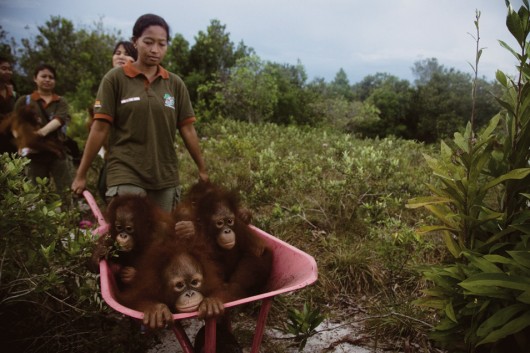 Their ancient rainforest home clearfelled for bloody Palm Oil,
now these Orang-utans are homeless in their own homeland
[Source: ^http://www.pdnphotooftheday.com/2010/05/4673]
(Click photo to enlarge)
Their ancient rainforest home clearfelled for bloody Palm Oil,
now these Orang-utans are homeless in their own homeland
[Source: ^http://www.pdnphotooftheday.com/2010/05/4673]
(Click photo to enlarge)
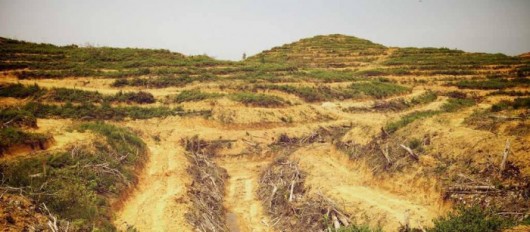 Cleared land at Muara Tae
(c) EIA/Telapak
Cleared land at Muara Tae
(c) EIA/Telapak
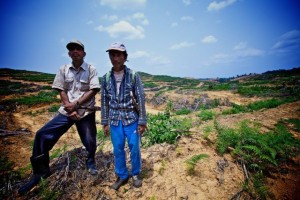 Villagers on cleared land at Muara Tae
(c) EIA/Telapak
Villagers on cleared land at Muara Tae
(c) EIA/Telapak
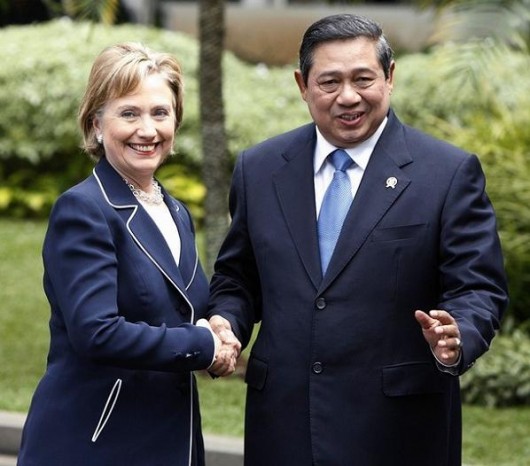 Self-serving bullshit artist
– take your pick
Self-serving bullshit artist
– take your pick
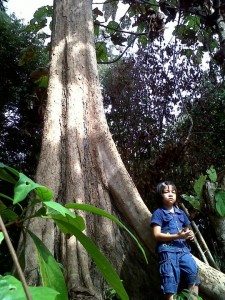 Benuaq girl and ncap payang tree
(c) EIA/Telapak
Benuaq girl and ncap payang tree
(c) EIA/Telapak
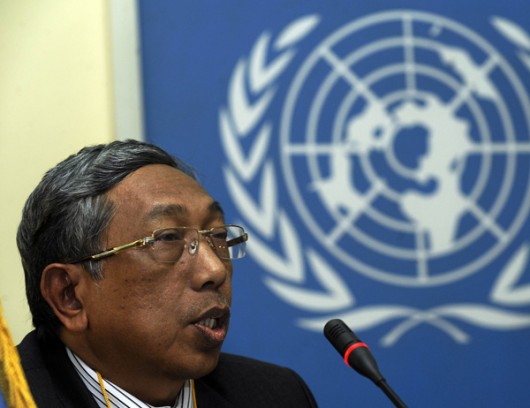 Indonesia’s Environment Minister Gusti Hatta,
all talk..so…’what does an Orang-Utan look like?‘
.
Indonesia’s Environment Minister Gusti Hatta,
all talk..so…’what does an Orang-Utan look like?‘
.
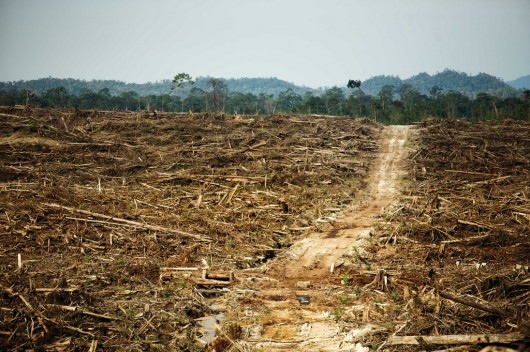 Cargill’s ecological facism for its self-serving Palm Oil
The destruction of primary rainforest by Duta Palma. West Kalimantan, Borneo.
Cargill was a key purchaser of palm oil from this notorious rainforest destroyer up until 2008.
Cargill’s ecological facism for its self-serving Palm Oil
The destruction of primary rainforest by Duta Palma. West Kalimantan, Borneo.
Cargill was a key purchaser of palm oil from this notorious rainforest destroyer up until 2008. Cargill’s pathetic claim of its Corporate Responsibility in Indonesia
Cargill’s pathetic claim of its Corporate Responsibility in Indonesia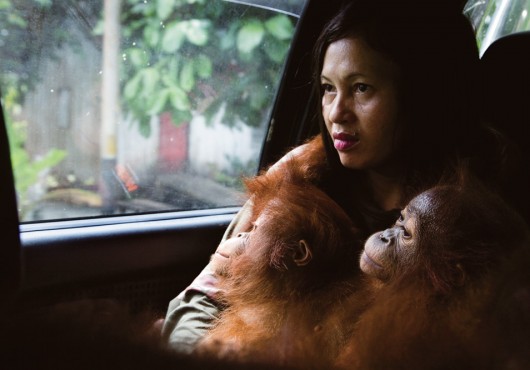 Forced eviction, forced immigration
Orang-Utan orphans fleeing their ravaged parents and their ravaged ancestral homes
Forced eviction, forced immigration
Orang-Utan orphans fleeing their ravaged parents and their ravaged ancestral homes
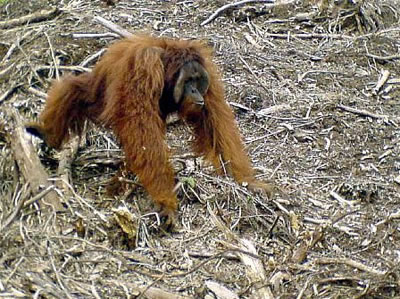 Not just home invasion, but complete ecological erasion
Cargill is calling in the A-Bomb to Orang-Utans
What United States citizen would tolerate this?
911 is being inflicted on vulnerable species by the United States
Not just home invasion, but complete ecological erasion
Cargill is calling in the A-Bomb to Orang-Utans
What United States citizen would tolerate this?
911 is being inflicted on vulnerable species by the United States
 Cargill’s worldwide president and COO Gregory R. Page
His life won’t end in devastation, but he drives devastation in vulnerable Kalimantan – in secret!
Cargill’s worldwide president and COO Gregory R. Page
His life won’t end in devastation, but he drives devastation in vulnerable Kalimantan – in secret!











 Get out of my bloody way!
It’s logging season and they could change the laws next week!
Get out of my bloody way!
It’s logging season and they could change the laws next week!




















